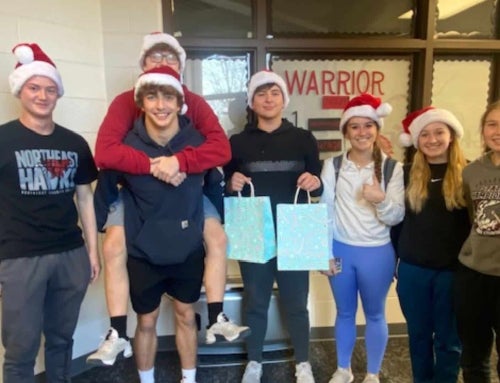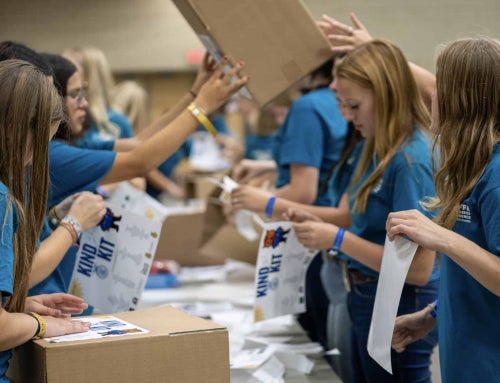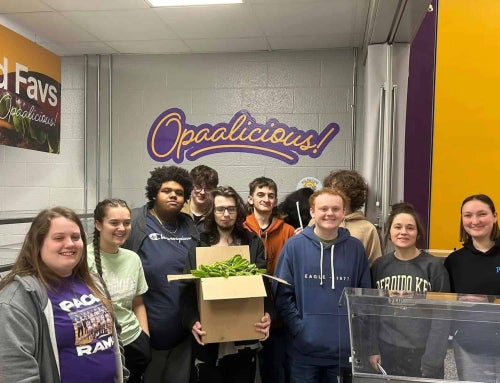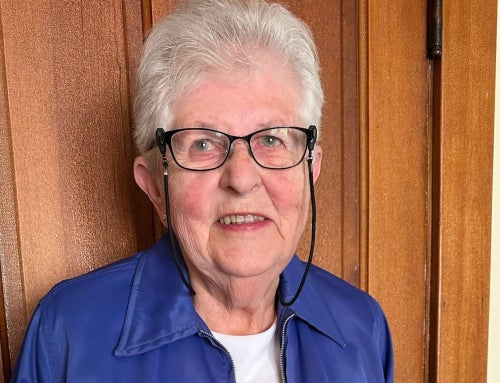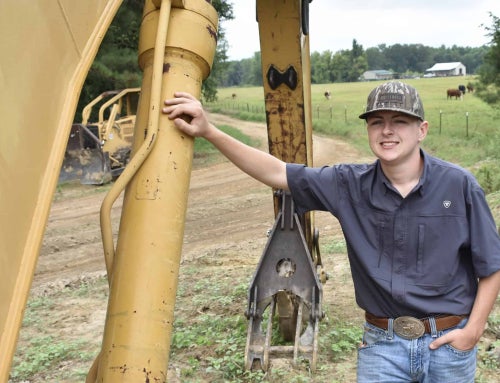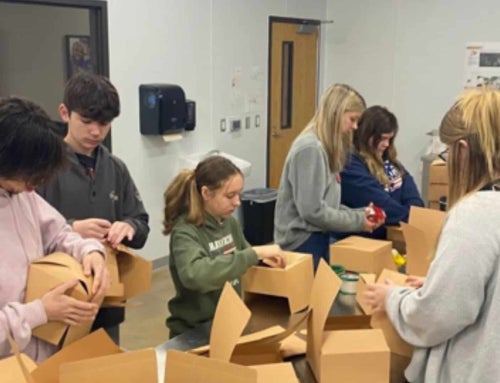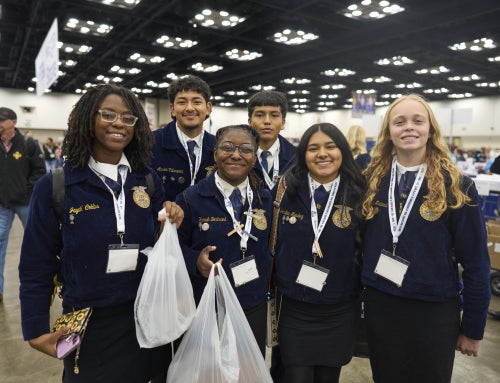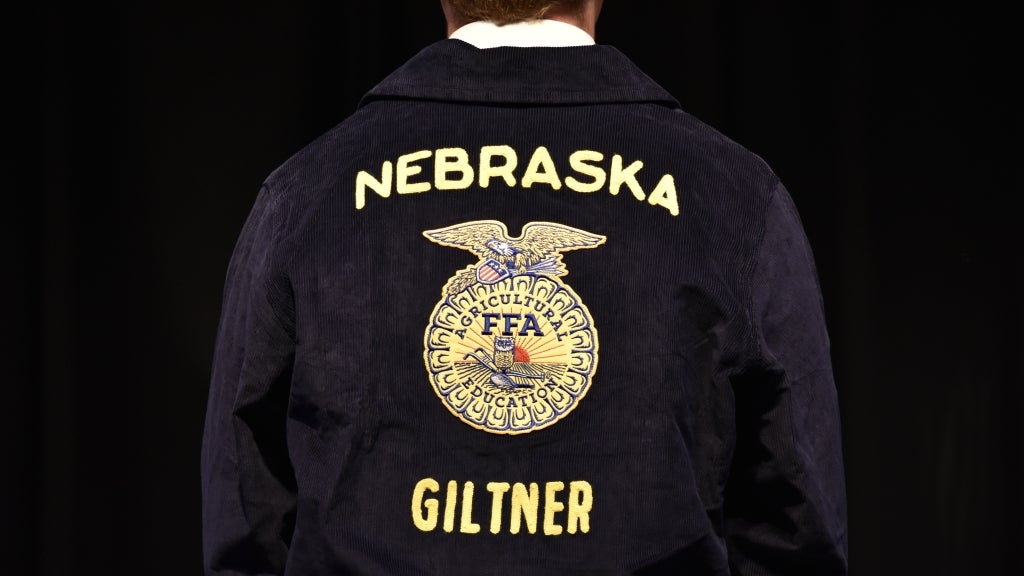
Photo courtesy of Kelsey Schulte.
Giltner, Neb., is located in Hamilton County, one of the top-three corn-producing counties in the state. “Our members are literally surrounded by agriculture, whether or not they want to be,” says agriculture teacher and Giltner FFA advisor Kelsey Schulte.
So, it’s surprising to learn Giltner Public Schools didn’t have an agricultural education program or FFA chapter for the longest time. That all changed when the district’s then-superintendent was so determined to offer agriculture-focused classes that he recruited rising college seniors as teaching candidates. He met Schulte the summer before her senior year at the University of Nebraska-Lincoln and offered her a job to spearhead the program and chapter, contingent on Schulte receiving her teaching certificate after graduation.
“I was able to secure my officers in December during my senior year of college, so we could go to officer training and get a jump start in the summer before school started,” says Schulte, who became the school’s first agricultural education teacher in the fall of 2023.
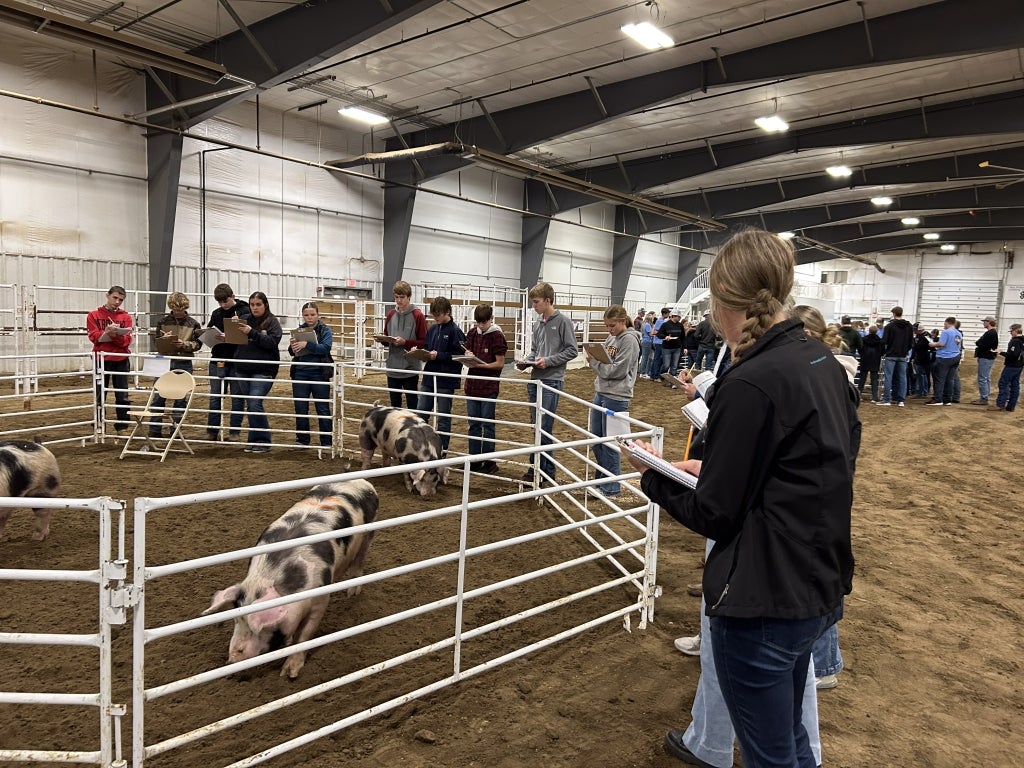
One of the ways Giltner FFA members dive into FFA is competing in career development events, such as livestock judging. Photo courtesy of Kelsey Schulte.
Small Chapter, Big Plans
When school started, FFA was the “brand-new, shiny object,” so recruiting new members was easy, says Schulte, who teaches grades 7–12. “They were so excited to meet me and be in a gorgeous new classroom, which was built just for us.”
Many of the seniors encouraged younger students to join, and Schulte told the first cohort of officers, “This is your chapter. What do you want to do?”
One of the many proposed ideas included serving harvest lunches to farmers bringing their loads to the Cooperative Producers, Inc. grain elevator. “It’s a great way for us to interact with the farmers and say thanks for all the work they do,” Schulte says.
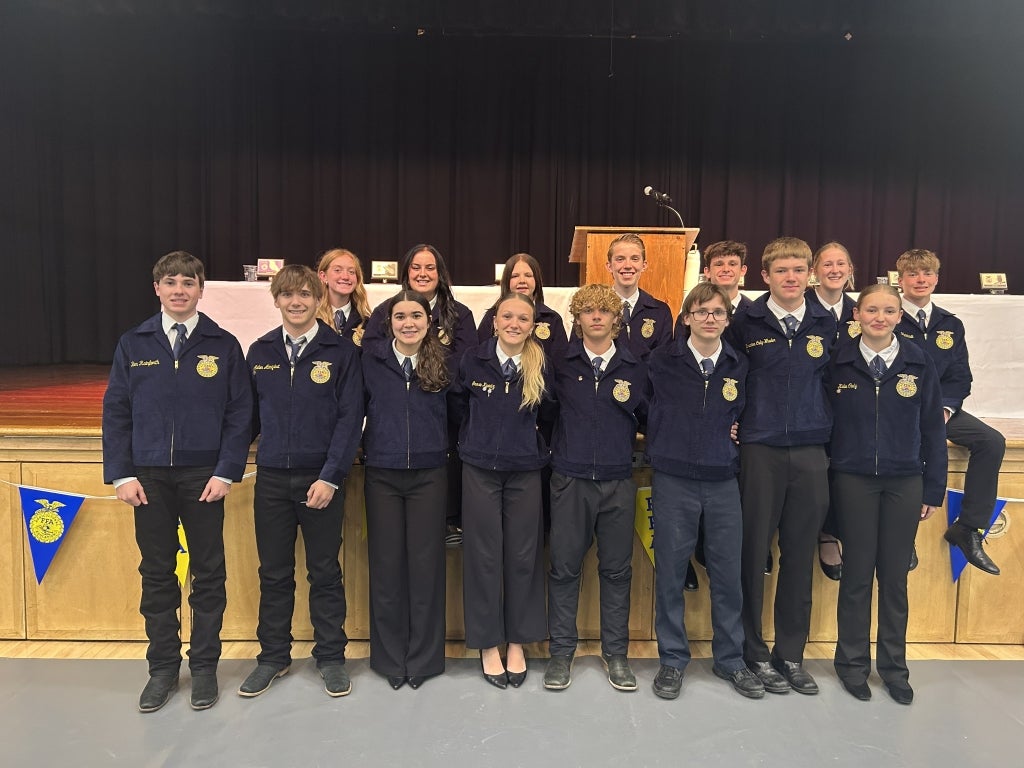
In its first two years, the Giltner FFA Chapter has grown in size and member involvement. Photo courtesy of Kelsey Schulte.
Members also planned a community 5K “Fun Run” as a fundraising event. “It’s been a big success,” Schulte says. “In 2024, we raised at least $1,200, which goes really far for our chapter and is amazing for a town of 300 people.”
Giltner FFA also hosted sloppy joe and hamburger dinners that served as both fundraisers and opportunities to introduce itself to the community.
Getting Everyone Involved
The success of these events illustrates the support the greater Giltner area has extended to the chapter, which had 22 members at the end of the last school year — more than 20% of the total student body.

When Giltner FFA members earn their Greenhand Degree, they put a green handprint on their classroom wall. Brody Rudy proudly displays his painted hand. Photo courtesy of Kelsey Schulte.
Maintaining both quality and quantity of membership is ongoing, says Schulte, who notes encouraging all members to stay involved as a critical component for growth.
“The first year, when we had nine officers, it was nearly half the chapter. It was easier to let that group, which was primarily seniors, manage everything,” Schulte says. Some chapter members, however, weren’t interacting as much as they could have, she adds.
“This past year, with six officers, we leaned more on committees and gave more members the opportunity to be more actively involved,” Schulte says. “When someone has a part in making an event successful, they have more ownership in the chapter. A couple members have even stepped into officer roles, which has been really cool to see.”
Set in Motion
Gauging student and community interest is one of eight things to consider when starting an agricultural education program and FFA chapter. If you’re looking to take action and start something new, explore this full list of considerations.




